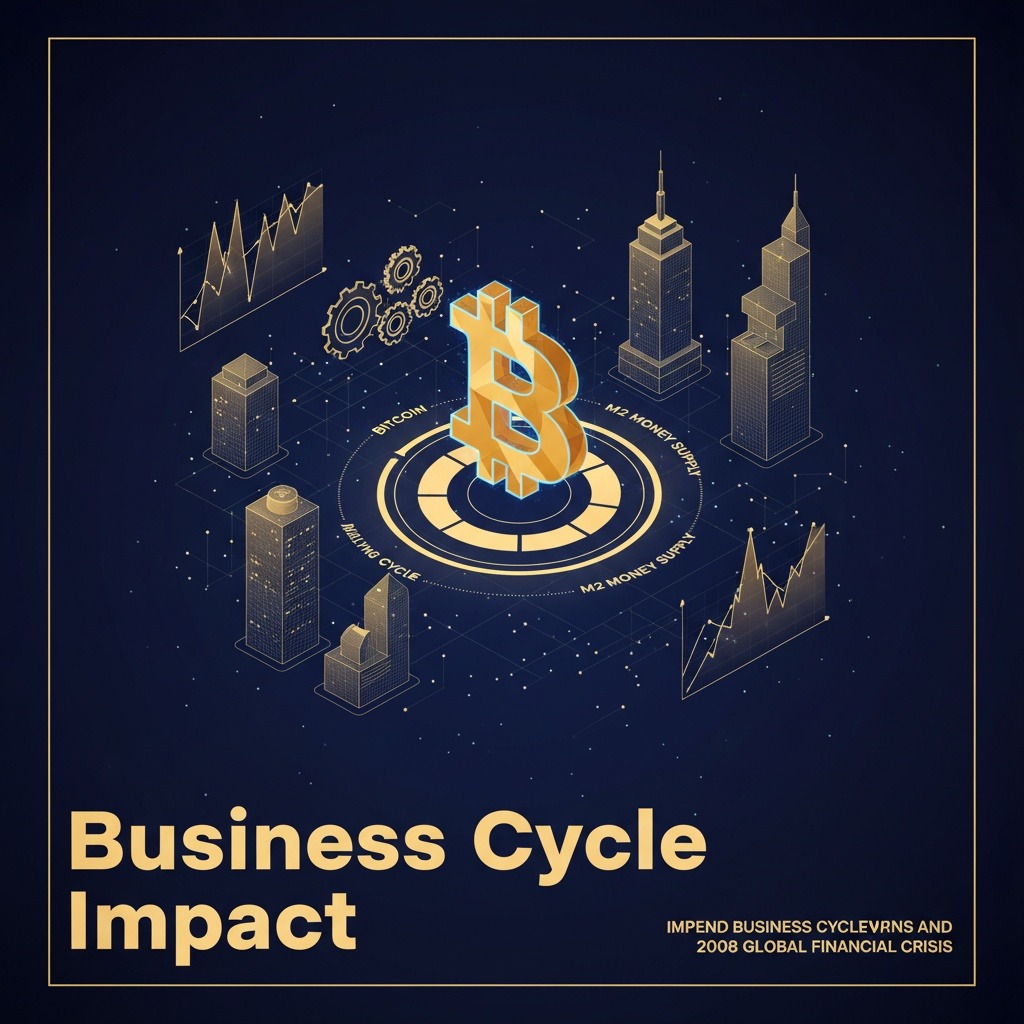The upcoming cryptocurrency bear market may be markedly severe, with its roots tied to a business cycle downturn unlike any previously experienced within the crypto space, according to blockchain analyst Willy Woo.
On Monday, Woo emphasized that the impending market decline “will be defined by another cycle people forget about.” Historically, Bitcoin’s price movements have aligned with two overlapping cycles: the four-year halving events and fluctuations in the global M2 money supply.
“Central banks inject M2 debasement in four-year cycles and both superimpose,” Woo explained. This mechanism, he notes, has helped shape previous crypto market trends. However, he warned that the next bear market’s dominant influence will stem from the broader business cycle—an economic rhythm that hasn’t previously coincided with significant crypto market downturns.
Woo highlighted that past major recessions, such as those in 2001 and 2008, occurred before cryptocurrencies gained traction. These recessions, driven respectively by the dot-com bubble burst and the global financial crisis, had far-reaching effects on traditional financial markets.
“If we experience a business cycle downturn akin to 2001 or 2008, it will test how Bitcoin behaves—whether it will mirror declines seen in tech stocks or act more like gold,” Woo stated.
Business cycles, characterized by economic contractions involving declines in GDP, rising unemployment rates, reduced consumer spending, and slower business activities, are often synonymous with recessions. These economic downturns influence liquidity in financial markets, which in turn impacts crypto trading.
The 2001 recession, marked by the collapse of overvalued technology companies, resulted in a 50% drop in the S&P 500 over two years. Similarly, the 2008 financial crisis saw a severe GDP contraction, a spike in unemployment, and a 56% plunge in the S&P 500, triggered by a housing market crash and consequent banking turmoil.
Regarding the timing of potential recessions, the National Bureau of Economic Research (NBER), an authority on economic cycles, monitors indicators such as employment levels, personal income trends, industrial production, and retail sales. While the pandemic-induced recession in early 2020 was sharp but brief, current data show no immediate recession threat, though risks remain elevated.
Additional complexity arises from current trade tariffs, which have already dampened economic growth in early 2025 and are projected to continue restraining GDP expansion through mid-2026.
Woo concluded by reflecting on the speculative nature of markets, which tend to price in anticipated events, including changes in M2 money supply. He proposed that Bitcoin’s current pricing might either imply that global financial markets have peaked or that Bitcoin is yet to fully adjust to upcoming economic realities.
This analysis underscores the interconnectedness of cryptocurrency markets with broader macroeconomic forces, suggesting that future bear markets in crypto will likely be influenced by traditional economic cycles beyond the crypto-specific factors observed to date.



